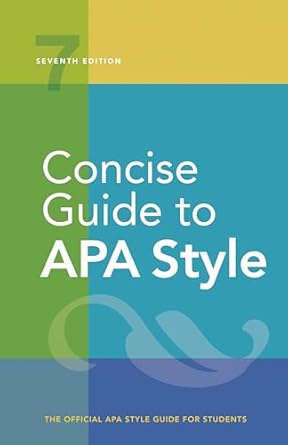[toc]
effective tables figures design tips guidelines
Concise Guide to APA Style: 7th Edition (OFFICIAL)
Page 156 Review
The Power of Visuals: A Deep Dive into Tables and Figures
In the realm of academic writing, tables and figures are indispensable tools for conveying complex information.
However, their effective use goes beyond mere aesthetics.
This excerpt from a guideline emphasizes the importance of purpose, clarity, and reader-centric design when incorporating visuals into your work.
Let’s dissect the key principles outlined:
Purpose-Driven Design
The foundation of any successful table or figure lies in its purpose.
As the guideline states: “When preparing a table or figure, first determine the purpose of the display; then, select a format that supports that purpose.” This underscores the need to avoid using visuals simply for decoration.
Each table and figure should serve a specific function, whether it’s summarizing a theoretical model or presenting the results of data analyses.
The guide gives an example: “For example, if the purpose is to illustrate a theoretical model, a chart is most likely the best option.”
Choosing the Right Format
The choice between a table and a figure depends on the information you wish to convey.
The guideline highlights this distinction: “Sometimes, multiple approaches are possible; for example, if your goal is to present group scores, a table would allow readers to see each group’s exact scores, whereas a figure would emphasize similarities or differences between groups.” Tables excel at presenting precise data, while figures are better suited for highlighting trends and relationships.
The guide suggests that when possible, it is helpful to use common forms for tables or figures.
Reader-Centric Approach
Effective communication is paramount in academic writing.
The guideline stresses the importance of designing tables and figures with readers in mind: “Design tables and figures with readers in mind.
Communicate findings clearly while also creating attractive visual displays.” This involves ensuring that visuals are easily understood and free from distractions.
In addition, the guide warns that changes in text often demand changes in tables and figures to ensure accuracy.
Principles of Effective Design
The excerpt outlines several key principles for designing effective tables and figures:
- Labeling: “Label all columns in tables” and “Label all elements in figure images (e.g., label the axes of a graph).” Clear labeling is essential for ensuring that readers can understand the information presented.
- Proximity: “Place items that are to be compared next to each other” and “Place labels next to the elements they are labeling.” This proximity facilitates easy comparison and comprehension.
- Font Choice: “In figure images, use sans serif fonts that are large enough to be read without magnification.” Sans serif fonts are generally considered more readable in figures.
- Self-Sufficiency: “Design the table or figure so it can be understood on its own (meaning readers do not have to refer to the text to understand it).
Define abbreviations used in the table or figure even if they are also defined in the text.” A well-designed visual should be self-explanatory.
- Avoiding Distractions: “Avoid decorative flourishes, which are distracting and can interfere with readers’ comprehension; instead, ensure that every element supports the goal of effective communication.” Simplicity and clarity are key.
The Consequences of Neglect
The guideline also points out the potential consequences of poorly designed visuals: “changes in text often demand changes in tables and figures, and a mismatch between data discussed in the text and data presented in tables and figures may result in a lower grade for student assignments if the error is not corrected before submission.” In other words, the integration of visuals should be seamless and consistent with the text.
Conclusion
In summary, tables and figures are powerful tools for communicating complex information in academic writing.
By adhering to the principles of purpose-driven design, reader-centricity, and clarity, you can ensure that your visuals enhance, rather than detract from, the overall impact of your work.
As the guidelines suggest, every element should support effective communication, and avoid distracting elements.
Buy full ebook for only $18: https://www.lulu.com/shop/american-psychological-association/concise-guide-to-apa-style-7th-edition-official/ebook/product-rmzpq54.html?page=1&pageSize=4
Effective Tables Figures Design Tips Guidelines
Read more: Grammar & Usage Guide: Write Clearly and Effectively


Leave a Reply